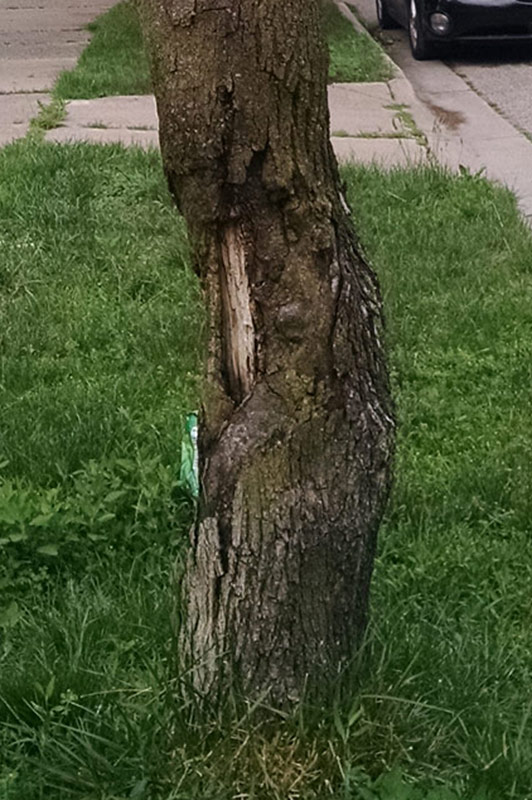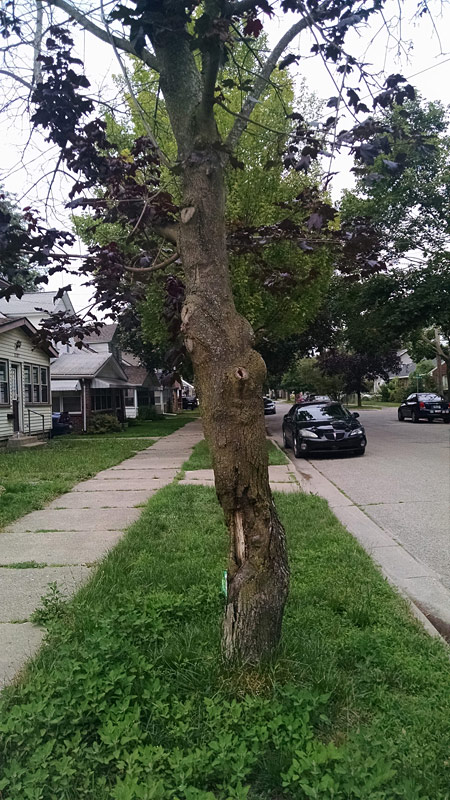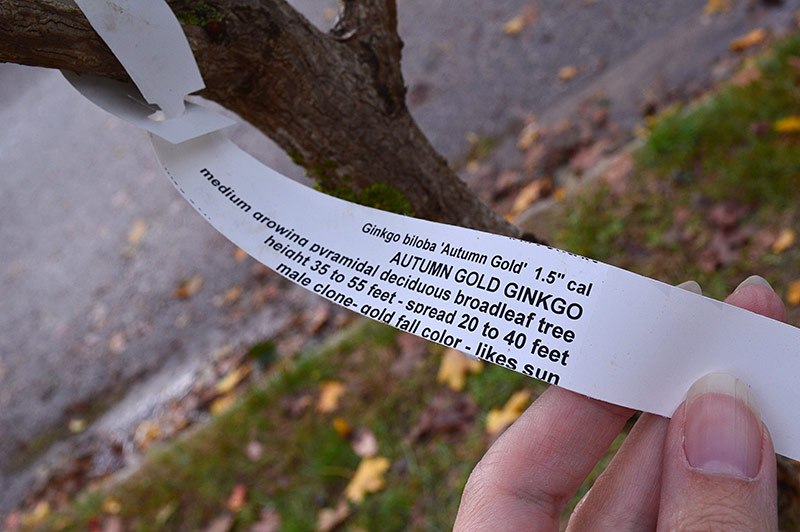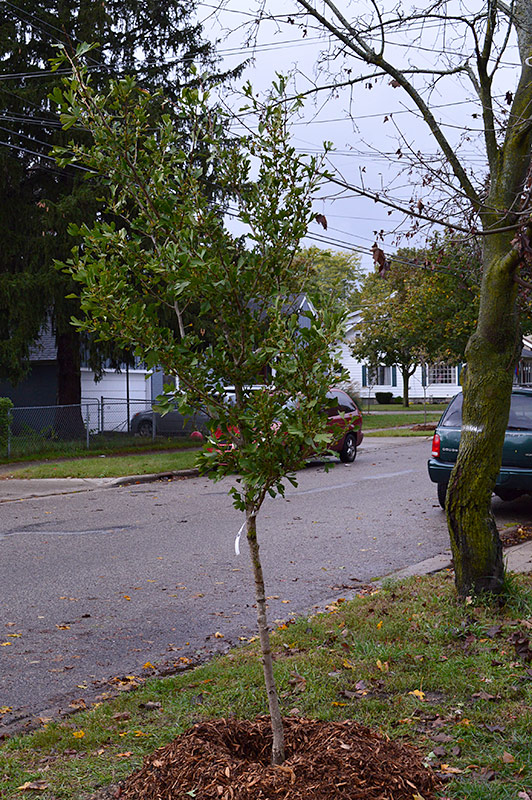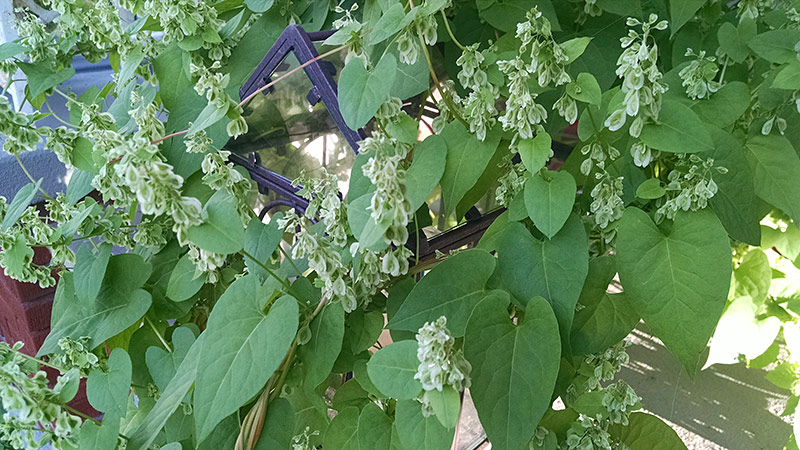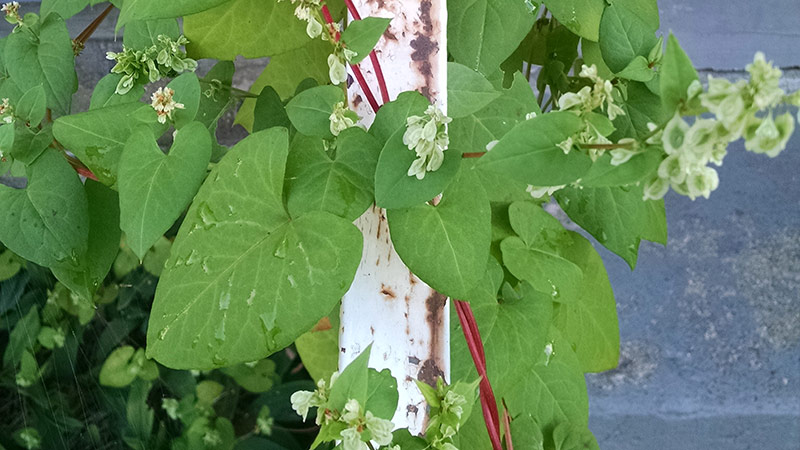As a part of our mid-winter getaway, the Other Half and I flew south for a long weekend. After arriving and grabbing some lunch, we made our way to the Florida Botanical Gardens. Yes, we went from the airport to the garden before checking into our lodging.
I like plants.
The weather was beautiful for this Zone 6a gardener. I have a low tolerance for a lot of heat and humidity, so this was a great time of year for me to be in Zone 10a.
Florida Herb Garden
There was plenty in bloom as we strolled through the herb garden. The garden’s website describes this are as “Culinary, medicinal, aromatic and economic herbs of Central Florida.” I think a more accurate description would be “Culinary, medicinal, aromatic and economic herbs that can be grown in Central Florida.
Here’s a pretty Mexican Marigold (Tagetes lucida), tagged as a culinary herb.
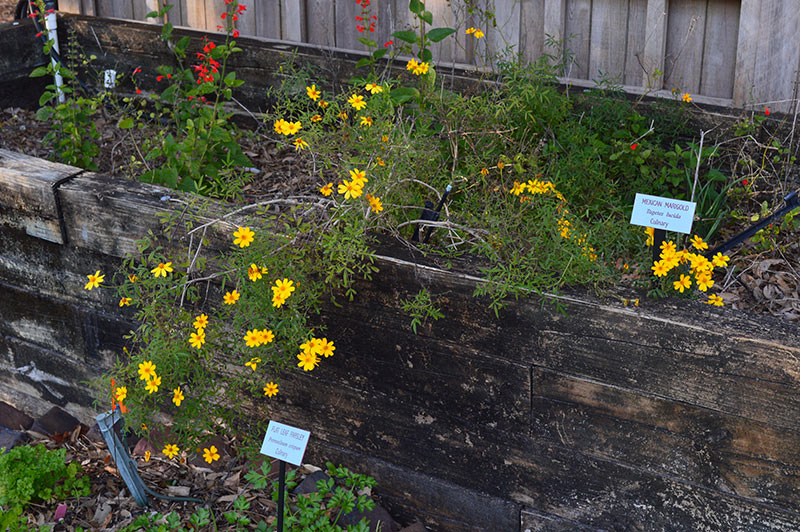
And here we have Leonotis leonurus, commonly referred to as lion’s ear. It was labeled as a medicinal herb that also attracts butterflies. This broadleaf evergreen (winter hardy in USDA zones 8-11) is native to Southern Africa.
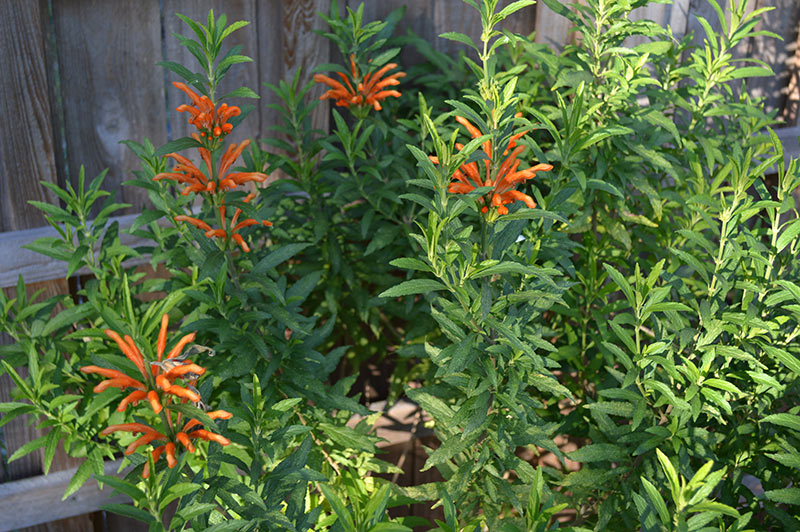
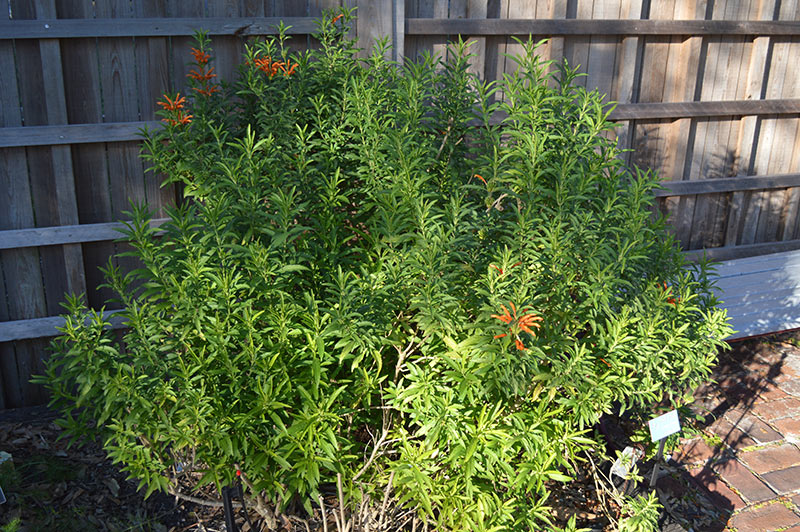
I was really delighted with this discolor sage (Salvia discolor), also known as Peruvian Black Sage or Andean Silver Leaf Sage. The foliage is green with a dusting of silver fuzz beneath. And look at those purple/black blooms. Oh my.
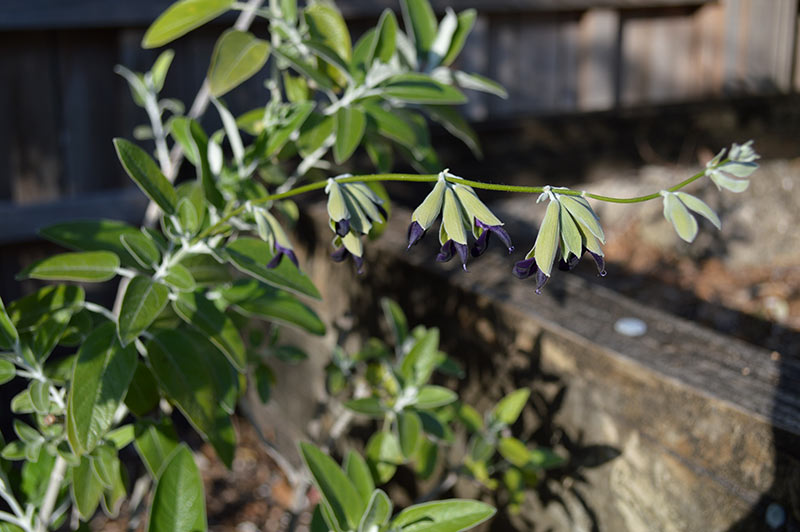
Florida Native Plants Garden
This section of the botanical garden featured “A collection of Florida natives, demonstrating the broad palette of plants suitable for the home landscape.”
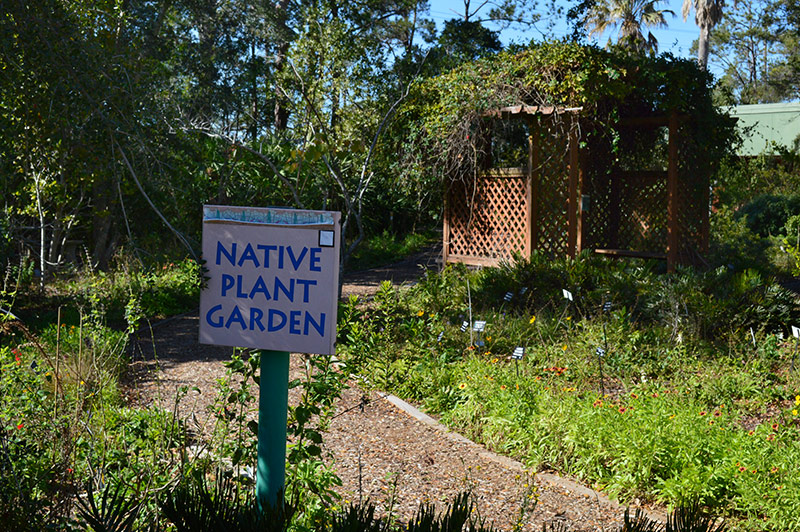
One plant we noticed showing up again and again is the coontie. Not only fun to say, this Florida native looked almost prehistoric to me. Its fern-like leaves form a fine texture but are leathery. Fun Fact: The coontie is a food source for the caterpillars of the atala butterfly.
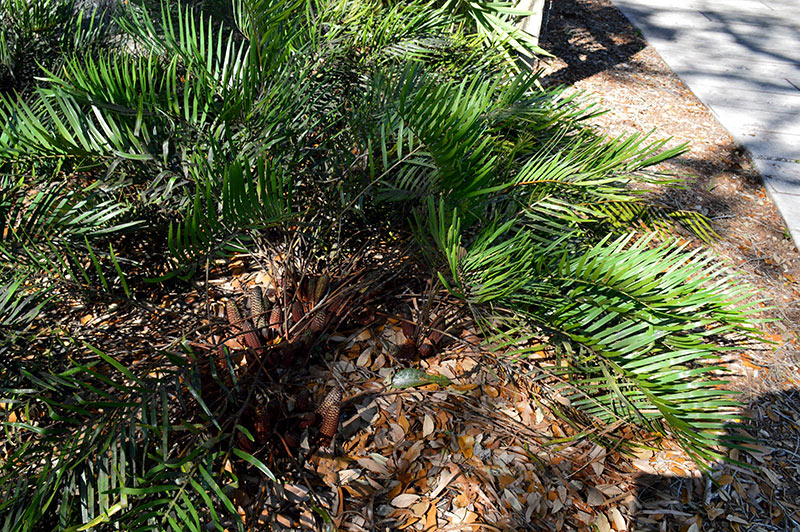
Upon further reading I discovered these plants are “cycads,” a group of plants abundant around the world during the Jurassic Period. This drought tolerant plant’s stem is underground. It sends up both male and female cones through the soil. The University of Florida Extension site states “Like all cycads, it is a gymnosperm and doesn’t produce any flowers or fruits. Instead, it reproduces by producing seeds in seed cones and pollen in pollen cones.”
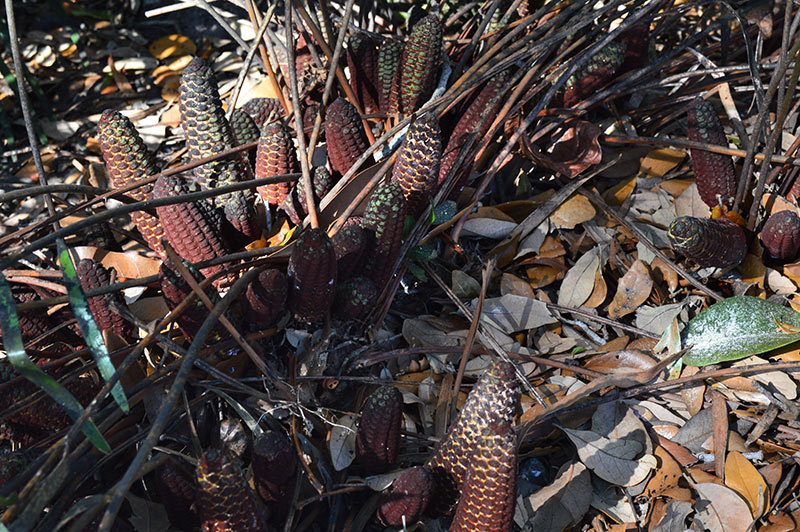
While the coontie above was labeled as (Zamia floridana) at the garden, this next one was labeled as (Zamia pumila). Love this specimen and the arches the leaves form. Still learning about the plant, I did some research and found there is a disagreement as to what the plant is actually called. C’mon Florida, get your sh*t together. From what I can tell from reviewing several university websites, the general agreement is Zamia pumila is the way to go.
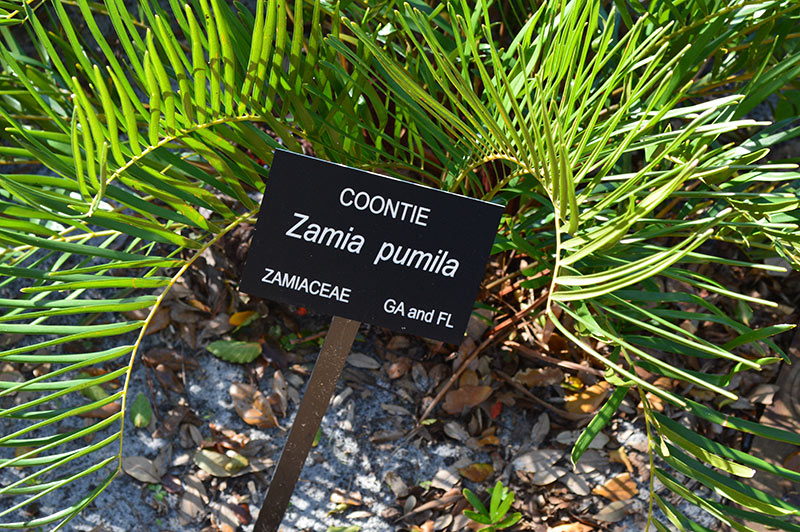
Entryway Plantings
There was a really pretty bed at the entrance of the main building. Plants included this wonderful Indian Holly Fern (Arachniodes simplicior).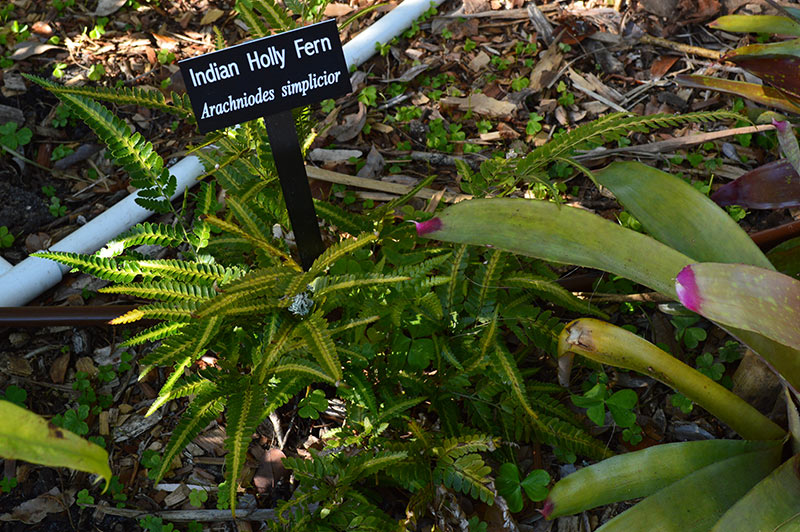
And then there were also these Aechmea, a genus of the Bromeliads (Bromeliaceae family). Fun Fact: That’s the pineapple family. The over 200 species of Aechmea have toothed, strap-like leaves. Also, the flowers are held on just as colorful branches.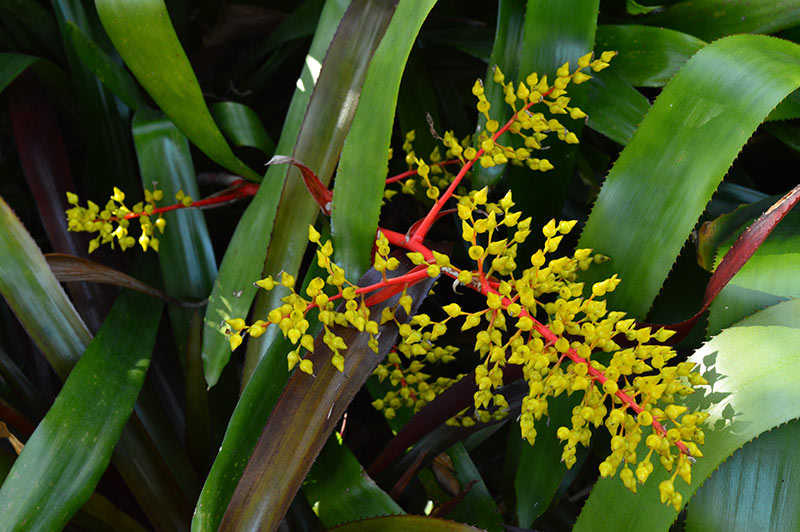
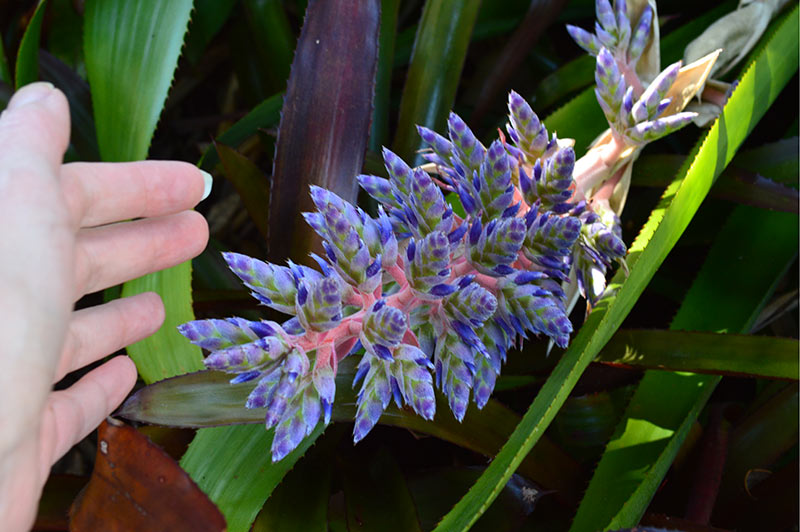
Tropical Walk
Along the tropical walk area, we ran into a whole collection of Crotons like this Gold Dust Croton (Codiaeum variegatum ‘Gold Dust’). Crotons have colorful foliage and are related to the spurge family (Euphorbiaceae).
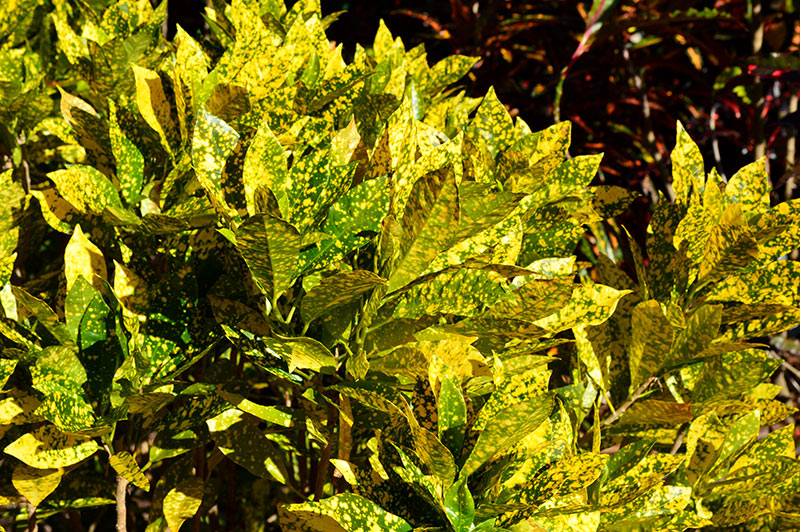
This was a pretty cool cultivar called ‘Ram’s Horn’.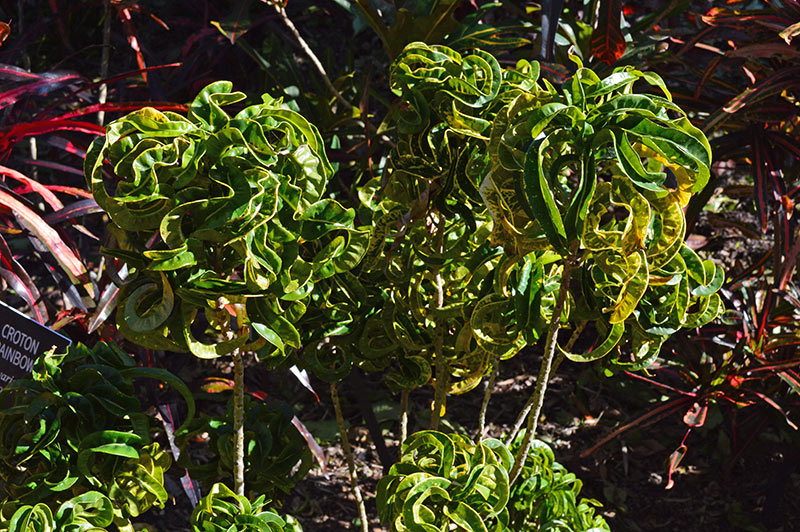
This cultivar of croton was ‘Mother and Daughter’.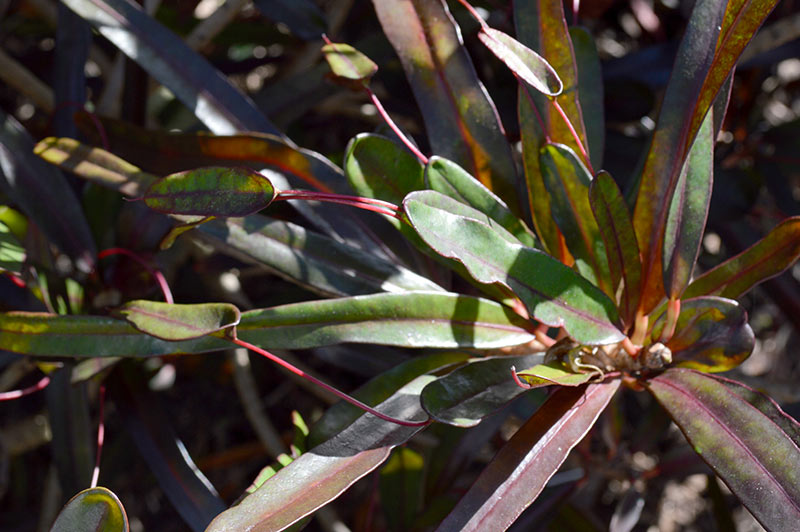
Across from the huge croton display was a tropical, vining type shrub called a Light Bulb Clerodendrum (Clerodendrum smithianum). What attracted me to the plant was the delicate, long strands of fading flowers. It was as if the plant was adorned with some type of flowering tinsel or light strings.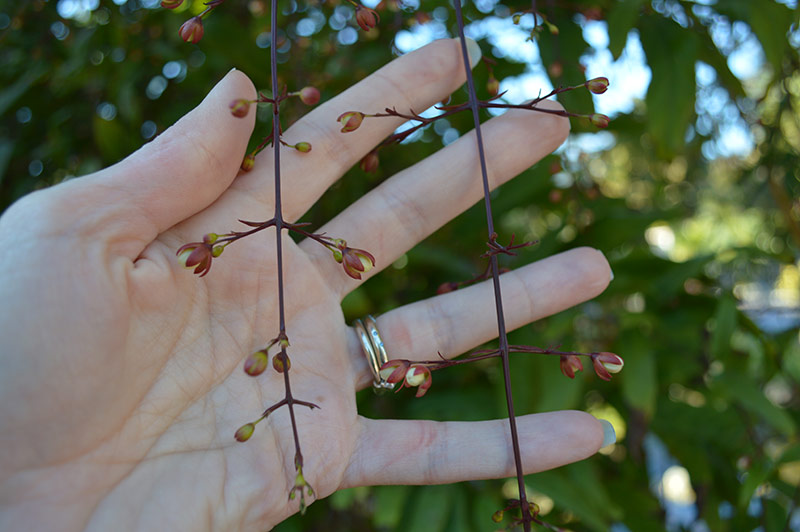
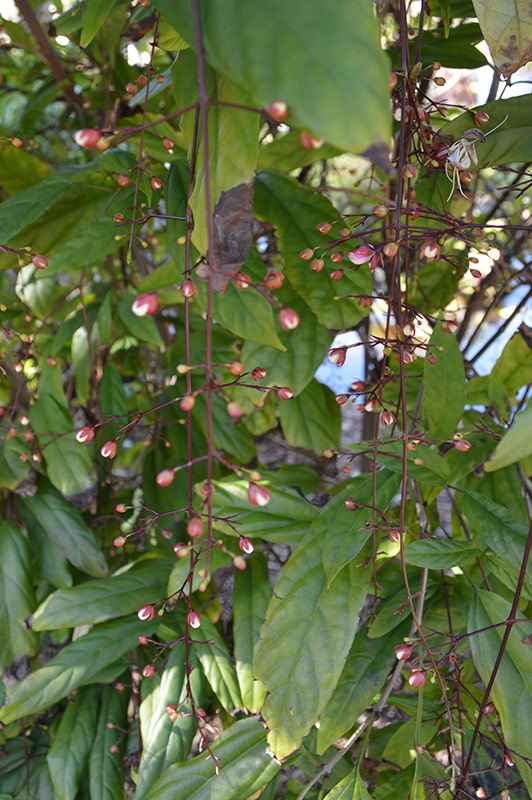
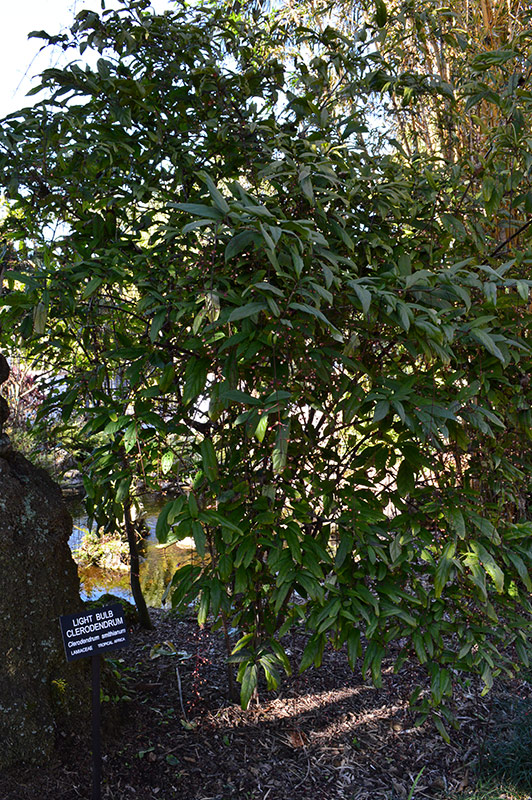
Resources
Florida Wildflower Foundation
University of Wisconsin Extension
